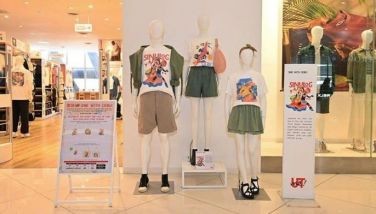Arts patronage
CEBU, Philippines - Arts columnist David A. Smith, in an article published at www.wacotrib.com, writes: "About half the adults in the country said they had attended at least one art exhibit or live theater, music, or dance performance in the past 12 months, a number that was honestly higher than I would've suspected." The statement is based on the most recent report of the National Endowment for the Arts (NEA), of the United States, entitled "Barriers and Motivations Affecting Arts Attendance."
Those who attended, Smith notes, gave reasons for doing so like socializing with friends and family, learning new things, experiencing high quality art, and supporting the community.
A more intriguing number, Smith adds, is the 13 percent who said they were interested in attending such things but did not. "A common reason was time: 6 out of 10 adults with children under age 6 said that a lack of time was the single greatest barrier to attending arts events."
If majority of American adults do not attend arts events simply for "lack of time," it would seem Filipinos have more reasons for the obvious poor art patronage in the country. In Cebu, in particular, how many Cebuanos go purposely to a painting exhibit during the entire run of the show? And how many local visitors do the museums have in a year?
The better culturally oriented among the local population comment that there's not much to come back to in the local museums and that probably accounts for the low museum visits. That may not be speaking of all the museums in the city, because there are museums around with vast exhibits that a visitor may not be able to fully explore in just one visit. The Museo Sugbo is one example.
And the other local museums are doing their best, as well, to make everyone's visit truly an interesting experience. At the JRG Halad Museum, visitors can listen to Cebuano songs of yesteryears; Halad being the only musical museum in the country. The Yap-Sandiego Ancestral House has added a café at its annex area, where visitors can taste authentic local heritage delicacies.
Yet despite the efforts, the local museums are still not swarmed by eager visitors. With the exception perhaps of Casa Gorordo, any local museum is very lucky to have a hundred visitors a week. And so the main challenge with these museums is how to get their heads above water.
With or without visitors, museums have to open for most days of the week, with regular staffs running the operations. Museums operators, thus, need to have deep pockets. Most of them only need to keep the operations going - acquisition of new items is not a priority.
The local museums are sustained merely by a passion for heritage - that of the museum operators. But a few individuals can only do so much. Sooner or later, they get all drained - emotionally and financially - to get going.
David A. Smith quotes from the NEA report that "budget and time constraints are real, but it is not clear whether removing these barriers would in fact increase arts attendance." To that he adds, "Indeed, a far greater constraint is the widespread notion that the arts offer little that is valued by contemporary culture."
Arts appreciation has to start somewhere. And perhaps, the home is the perfect starting point. Parents who openly express their thoughts on music, theater, literature, movies, paintings and other art forms also open the minds of their children about these beautiful human endeavors.
Then the school system carries it forward, further firing up the budding artistic curiosities of young children. People who have been properly oriented of the essential value of the arts in their life understand that while the arts do not provide the physical needs of the population, arts-conscious individuals do in fact get another kind of nutrition from arts appreciation and involvement - mental and spiritual.
In this sense, the arts are equally a basic human need. If entire communities are made to understand this, then the prevalent lukewarm arts patronage will cease to be. People who appreciate arts exude a certain benign personality - and many of them attest that such outward look is only a projection of their actual experience of life. (FREEMAN)
- Latest





























